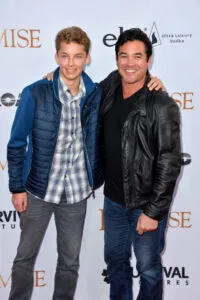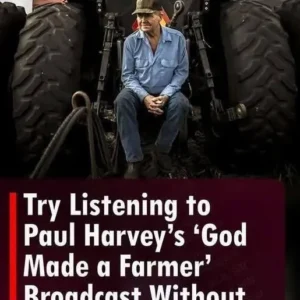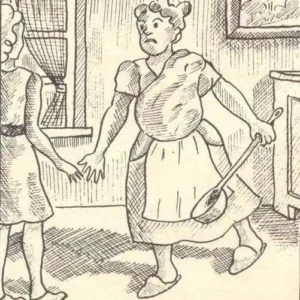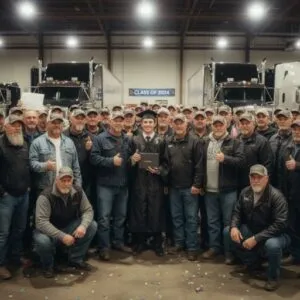
Twelve bikers formed a human shield around my screaming autistic son in the middle of the highway while everyone else just filmed with their phones.
My eight-year-old Max had bolted from our car during a meltdown, running straight into traffic on I-95, and within seconds, dozens of cars had stopped – not to help, but to record the “crazy kid” having a breakdown in the fast lane.
I was sobbing, trying to reach him as he sat rocking and screaming on the asphalt, cars honking, people shouting at us to “control your brat” and “get that retard off the road.”
Then the rumble came. Twelve Harleys cutting across three lanes, surrounding my son in a protective circle, their riders dismounting like some kind of leather-clad SWAT team.
The lead biker, a massive man with a gray beard down to his chest, looked at the crowd of phone-wielding gawkers and said five words that changed everything: “Anyone filming this child dies.”
The phones disappeared instantly. But what happened next – what those terrifying-looking bikers did for the next three hours on that highway – was something no one could have predicted.
The biker who’d threatened the crowd walked toward my son, but instead of trying to grab him or yell at him like everyone else had been doing, he did something that made my heart stop.
He laid down on the asphalt next to Max. Just laid down on his back on the highway, about three feet away from my screaming son, and started…
Max had been doing so well that morning. We’d been driving to his special therapy center in Boston, a three-hour trip we made every month. He’d had his headphones, his tablet, his weighted blanket – all the tools that usually kept him calm during long rides.
But forty minutes from our destination, everything went wrong.
A motorcycle backfired next to our car. The sound sent Max into immediate panic. Before I could even pull over safely, he’d unbuckled himself and was clawing at the door handle.
“Max, no! Wait, baby, let Mommy pull over—”
But autism doesn’t wait. When the meltdown hits, rational thought disappears. My brilliant boy who could name every dinosaur that ever existed, who could recite entire documentaries word for word, was suddenly just a terrified animal needing to escape.
He got the door open at 45 miles per hour.
I slammed the brakes, causing a chain reaction of screeching tires behind me. Max tumbled out, somehow landing on his feet, and ran directly into the middle lane.
By the time I got my hazards on and got out, he was sitting in the fast lane, rocking and screaming, hands over his ears, completely overwhelmed.
Cars swerved around him, honking. People rolled down windows to yell. And then the phones came out.
“Oh my God, look at this kid!” “Is he on drugs?” “Where are his parents?” “This is going on YouTube!”
I tried to reach Max, but every time I got close, he’d scream louder and scoot away. He didn’t recognize me in his state of panic. I was just another source of sensory input in his overwhelming world.
“Please!” I begged the growing crowd. “He’s autistic! Don’t film him! Please just give us space!”
But they didn’t care. A dozen phones pointed at my baby as he rocked and sobbed. Someone actually laughed when he started hitting himself in the head – his way of trying to regulate the sensory overload.
That’s when the motorcycles arrived.
They came from behind, weaving through the stopped traffic. Twelve of them, engines so loud that everyone turned to look. They wore leather vests with patches I couldn’t read, looking exactly like the kind of people you’d cross the street to avoid.
They parked their bikes in a circle around Max, engines off, creating a barrier between him and the crowd. The lead biker, who I’d later learn was called Tank, dismounted and surveyed the scene.
When he saw all the phones pointed at my son, his expression went dark.
“Anyone filming this child dies.”
His voice was calm, matter-of-fact. The phones vanished.
Then Tank did something I’ll never forget. He walked to the edge of the circle, got down on his hands and knees, then laid flat on his back on the hot asphalt, about three feet from Max.
“Hey, little man,” he said, his voice now soft, gentle.
Tank continued talking to Max “You know what kind of engine my bike has? It’s a Twin Cam 103. That means it’s got two cylinders that fire like this – boom, boom, boom, boom.”
Max’s rocking slowed slightly. He was still covering his ears, but I could see him glancing at the biker.
“You know what’s cool about motorcycles?” Tank continued, still lying flat, not making eye contact with Max – somehow knowing that direct eye contact would make things worse. “They’re all about patterns. Everything has a rhythm. The pistons, the valves, the timing chain. It’s all patterns, all predictable.”
Max loved patterns. It was one of his things.
Another biker, a woman with silver hair in a long braid, slowly sat down about five feet from Max. Not close enough to touch, just close enough to be part of the scene.
“Tank’s bike makes a different pattern than mine,” she said conversationally. “Mine’s got a different engine. Want to hear about it?”
For three hours, those bikers sat on that highway with my son.
They didn’t touch him – somehow understanding he couldn’t handle touch in that state.
They didn’t force eye contact.
They didn’t raise their voices.
They just talked. About motorcycles, about engines, about the patterns of the road. When Max started showing interest in one biker’s patches, the man carefully removed his vest and slid it across the asphalt for Max to examine.
“That one’s from Sturgis,” the biker explained. “That’s a big motorcycle rally. Lots of bikes. Probably too loud for you, but the patterns of all those engines together – it’s like a symphony.”
Max touched the patch gently, his breathing finally starting to regulate.
The crowd had long since dispersed. Traffic was being redirected around us. But those twelve bikers stayed put, creating a safe space for my son to come back to himself.
One of them had even called the police to explain the situation, ensuring we wouldn’t be in trouble. Another had contacted the therapy center to let them know we’d be late.
“How did you know?” I finally asked Tank, tears streaming down my face. “How did you know what to do?”
Tank smiled, still lying on the asphalt like it was the most natural thing in the world. “My nephew’s autistic. Fifteen now. I’ve been through more meltdowns than I can count. The first thing you learn is that when they’re in that state, the whole world is attacking them. Sounds, lights, touches – it’s all too much. You gotta make yourself small, quiet, predictable.”
The woman with the braid nodded. “My son too. He’s twenty-three now. Still has rough days, but he’s doing great. Actually works as a mechanic. Turns out understanding patterns makes you real good with engines.”
One by one, the bikers shared their connections. A daughter on the spectrum. A brother. A grandson. These scary-looking, leather-clad riders all had someone they loved who was neurodivergent
“That’s actually why we ride together,” Tank explained. “We started as a regular MC, but over the years, we found out how many of us were dealing with autism in our families. Now we do rides to raise money for autism services, help families get to appointments, stuff like that.”
After three hours, Max finally stood up. He walked over to Tank, who was still lying on the ground, and in his monotone voice said, “Your bike has a Twin Cam 103 engine.”
“That’s right, little man. Want to hear it start up? From a distance, so it’s not too loud?”
Max nodded. Tank slowly got up, his joints probably screaming after three hours on asphalt, and walked to his bike. He started it, the rumble deep but controlled.
Max didn’t cover his ears. Instead, he tilted his head, listening to the pattern.
“It sounds like dinosaur steps,” he announced. “Like a T-Rex walking.”
All the bikers smiled. Tank revved the engine gently, creating a rhythm. “Now it’s running,” he said.
Max actually smiled. My boy who’d been in complete meltdown smiled.
The bikers escorted us to the therapy center, riding in formation around our car. When we arrived, they waited to make sure Max got inside okay.
Before they left, Tank handed me a card. “That’s our club number. You ever need help – if he has another meltdown, if you need someone to follow you on a long drive, whatever – you call. We’ve got chapters all over New England.”
I looked at the card: “Chrome Guardians MC – Riding for Autism Awareness.”
“But how did you even know we needed help?” I asked.
Tank grinned. “We were three cars behind you when he jumped out. Saw the whole thing starting. When we realized what was happening, we knew we had to help. That’s what we do. We protect kids like Max from a world that doesn’t understand them.”
The woman with the braid added, “Plus, we really hate when people film kids having medical emergencies. That’s just cruel.”
As they mounted their bikes to leave, Max ran out of the therapy center. I panicked for a moment, but he just wanted to say something to Tank.
“Motorcycles are good,” he said in his matter-of-fact way. “They have patterns. And they protected me from the phones.”
Tank knelt down to Max’s level, still keeping appropriate distance. “You know what, little man? You’re right. Motorcycles are good. And you know what else? You’re good too. Your brain just works different, and that’s okay. Different isn’t wrong.”
Max considered this. “My brain has patterns too. Different patterns.”
“The best kind of patterns,” Tank agreed. “The kind that sees dinosaurs in engine sounds.”
As the Chrome Guardians rode away, Max stood watching until they were out of sight. Then he said something that broke my heart and healed it at the same time:
“Mom, those bikers understood my patterns. Most people don’t understand my patterns.”
“No, baby,” I agreed, hugging him gently. “Most people don’t.”
“But they did,” he said with wonder. “The scary-looking ones understood, and the normal-looking ones just wanted to film me being broken.”
That night, I couldn’t stop thinking about what Max said. The “scary” bikers who looked like they’d break your kneecaps were the ones who spent three hours on hot asphalt, patiently helping a child in crisis. The “normal” people with their smartphones and SUVs were the ones acting like monsters.
I posted about our experience on a local autism support group page. Within hours, I had dozens of responses from parents sharing similar stories about the Chrome Guardians.
How they’d shown up to birthday parties when no other kids would come. How they’d escorted special needs buses on field trips. How they’d raised money for families who couldn’t afford therapy.
But more than that, they understood. In a world where autism parents often feel isolated, judged, and exhausted, these unlikely angels in leather understood.
Two weeks later, we were driving to therapy again. Max was anxious, remembering what happened last time. Then we heard the rumble. Four Chrome Guardians pulled alongside our car, giving Max a thumbs up through the window.
They followed us the entire way to Boston.
Max was calm the whole ride, watching the patterns of the motorcycles, counting the rhythm of their engines. When we arrived, he jumped out and ran to them.
“You came back!”
“Told you, little man,” Tank said, removing his helmet. “You call, we come. That’s what family does.”
“But you’re not my family,” Max said, confused by the social concept.
“Family isn’t just blood, kid. Family is people who understand your patterns. And we understand yours.”
Max thought about this for a long moment, then nodded. “Okay. You’re my motorcycle family.”
From that day forward, the Chrome Guardians became part of our lives. They’d show up for Max’s school presentations about motorcycles. They’d escort us to appointments. They even came to his birthday party – twelve bikers sitting on tiny chairs, eating dinosaur cake, teaching kids about engine patterns.
But the most important thing they gave us wasn’t the protection or the support. It was the reminder that understanding and kindness can come from the most unexpected places. That the people society tells us to fear might be the very ones who show up when everyone else is just filming your crisis for social media.
Max is ten now. He still has meltdowns, still struggles with sensory overload. But he also knows that somewhere out there, there’s a group of bikers who understand his patterns. Who will lay down on hot asphalt for three hours just to help him feel safe.
Last week, he told me he wants to get a motorcycle when he’s older. “Not to be cool,” he explained in his logical way. “But because motorcycle people understand different brains. And I want to help other kids like me.”
I used to pray for Max to be “normal.” Now I pray he stays exactly who he is – a kid who sees dinosaurs in engine sounds and finds family in the most unexpected places.
And I thank God for twelve bikers who formed a human shield around my son when the rest of the world just wanted to film his pain.
Because that’s what real heroes do. They don’t stand back and record someone’s worst moment. They get down on the ground and meet them where they are, even if where they are is the middle of I-95, scared and overwhelmed and unable to explain why the world feels like it’s ending.
They protect. They understand. They show up.
Even if they’re wearing leather and riding Harleys and looking like everyone’s worst nightmare.
Sometimes, especially then.





